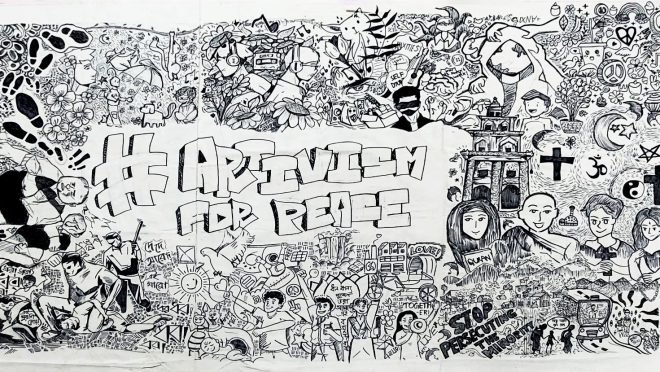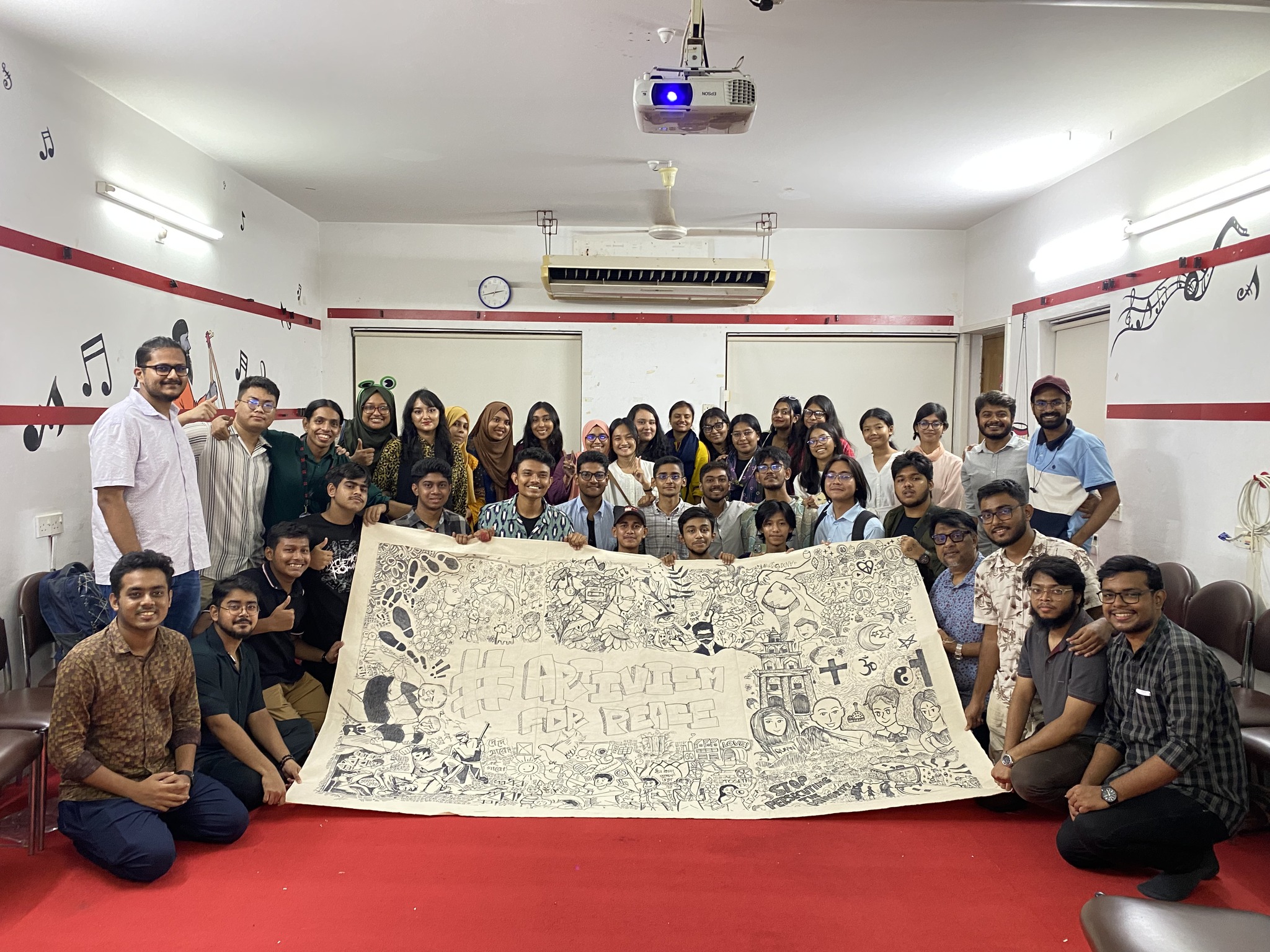Artivism for Peace: How youth are leading change through art
Artivism for Peace: How youth are leading change through art

In a world where polarization and conflict seem pervasive, an increasing number of young people are turning to art as a tool for peacebuilding, viewing it as a universal language that bridges borders and unites communities. Recently, 30 young individuals gathered in Dhaka for the “Artivism for Peace” workshop, where they explored how their creativity could inspire positive social change. This two-day intensive workshop went beyond mere artistry, motivating participants to become advocates for peace.
Facilitated by professional trainers, the program combined theoretical sessions with hands-on artistic exercises. From painting peace murals to engaging in rap battles on social justice, the young activists explored how art could serve as a powerful medium for change.
A core theme of the workshop was demonstrating that activism does not need to be loud or chaotic to be effective. This was highlighted during a unique activity where participants were split into groups and tasked with creating visual representations of peace without uttering a single word. The activity emphasized that art can convey complex ideas without the need for words.
The workshop also focused on digital artivism, equipping participants with essential skills such as critical thinking, SEO, and digital content management. In a world dominated by social media, these tools are vital for navigating the digital landscape and driving meaningful change.

Youth as catalysts for peace
While the workshop offered practical skills, its most significant impact was how it inspired participants to see themselves as peacebuilders. This event placed them at the forefront in a world that often marginalizes youth voices. The participants learned about the responsibilities of being an “artivist” (artist-activist) and how their creativity could serve as a vehicle for empathy and societal transformation.
A session led by one of the facilitators on non-violent activism acted as a wake-up call for many. Through activities such as meme-making on social issues and discussions on peaceful advocacy, participants were encouraged to confront challenges head-on. As one attendee expressed, “This workshop made me realize that even small actions—like creating a meme or painting a mural—can contribute to larger social change.”
The future of artivism in Bangladesh
The “Artivism for Peace” workshop was not just a fleeting event but part of a broader movement to cultivate a new generation of creative advocates in Bangladesh. Addressing topics such as combating hate speech and documenting human rights issues through art, participants left equipped with new skills and a renewed sense of purpose. As they return to their communities, they carry the understanding that art can be a sustained force for peace.
The workshop concluded with a collaborative mural session, where participants joined forces to create a large canvas promoting unity and tolerance. This session symbolized the collective strength of young people working together for a peaceful future, proving that when creativity merges with activism, the potential for social change is limitless.
One participant summed up the experience by saying, “This workshop showed me that being an artist isn’t just about creating; it’s about contributing. It’s about using our talents to make the world a better place.”


